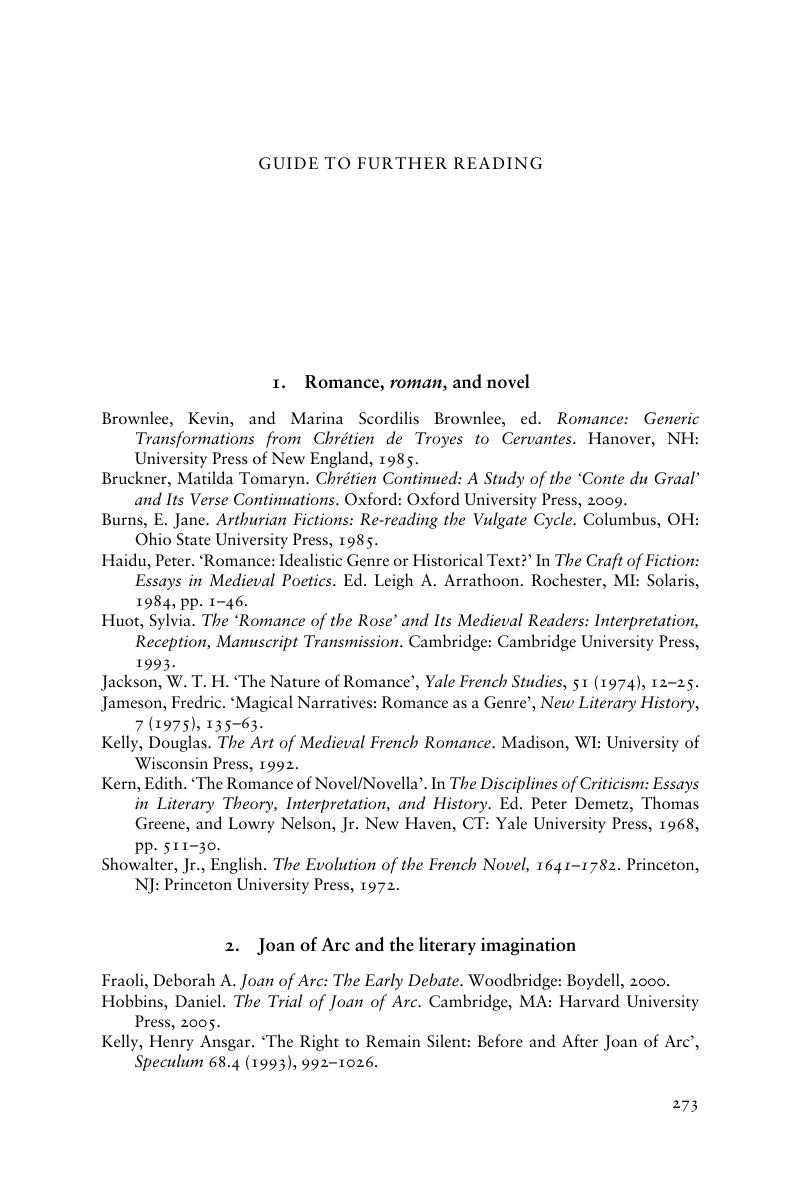Book contents
- The Cambridge Companion to French Literature
- The Cambridge Companion to French Literature
- Copyright page
- Contents
- List of illustrations
- Notes on contributors
- Chronology
- Introduction
- 1 Romance,roman, and novel
- 2 Joan of Arc and the literary imagination
- 3 Poetry and modernity
- 4 The graphic imagination and the printed page
- 5 Tragedy and fear
- 6 Galantculture
- 7 Varieties of doubt in early modern writing
- 8 Nature and Enlightenment
- 9 Nostalgia and the creation of the past
- 10 Exoticism and colonialism
- 11 Poetic experimentation
- 12 The renewal of narrative in the wake of Proust
- 13 French literature as world literature
- 14 Literature and sex
- 15 The literary-philosophical essay
- 16 The novel in the new millennium
- Guide to further reading
- Index
- Cambridge Companions to …
- References
Guide to further reading
Published online by Cambridge University Press: 05 December 2015
- The Cambridge Companion to French Literature
- The Cambridge Companion to French Literature
- Copyright page
- Contents
- List of illustrations
- Notes on contributors
- Chronology
- Introduction
- 1 Romance,roman, and novel
- 2 Joan of Arc and the literary imagination
- 3 Poetry and modernity
- 4 The graphic imagination and the printed page
- 5 Tragedy and fear
- 6 Galantculture
- 7 Varieties of doubt in early modern writing
- 8 Nature and Enlightenment
- 9 Nostalgia and the creation of the past
- 10 Exoticism and colonialism
- 11 Poetic experimentation
- 12 The renewal of narrative in the wake of Proust
- 13 French literature as world literature
- 14 Literature and sex
- 15 The literary-philosophical essay
- 16 The novel in the new millennium
- Guide to further reading
- Index
- Cambridge Companions to …
- References
Summary

- Type
- Chapter
- Information
- The Cambridge Companion to French Literature , pp. 273 - 280Publisher: Cambridge University PressPrint publication year: 2015

